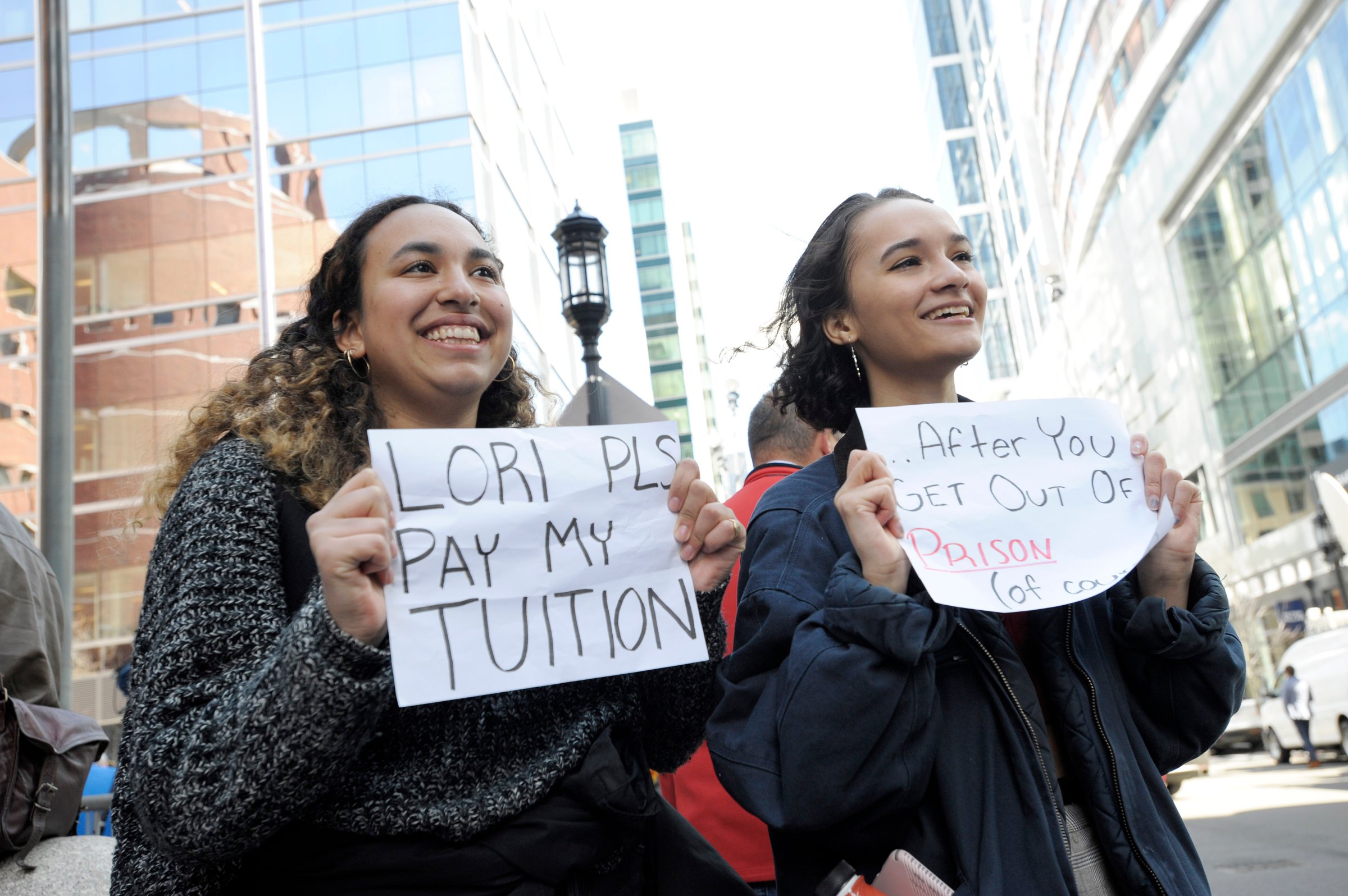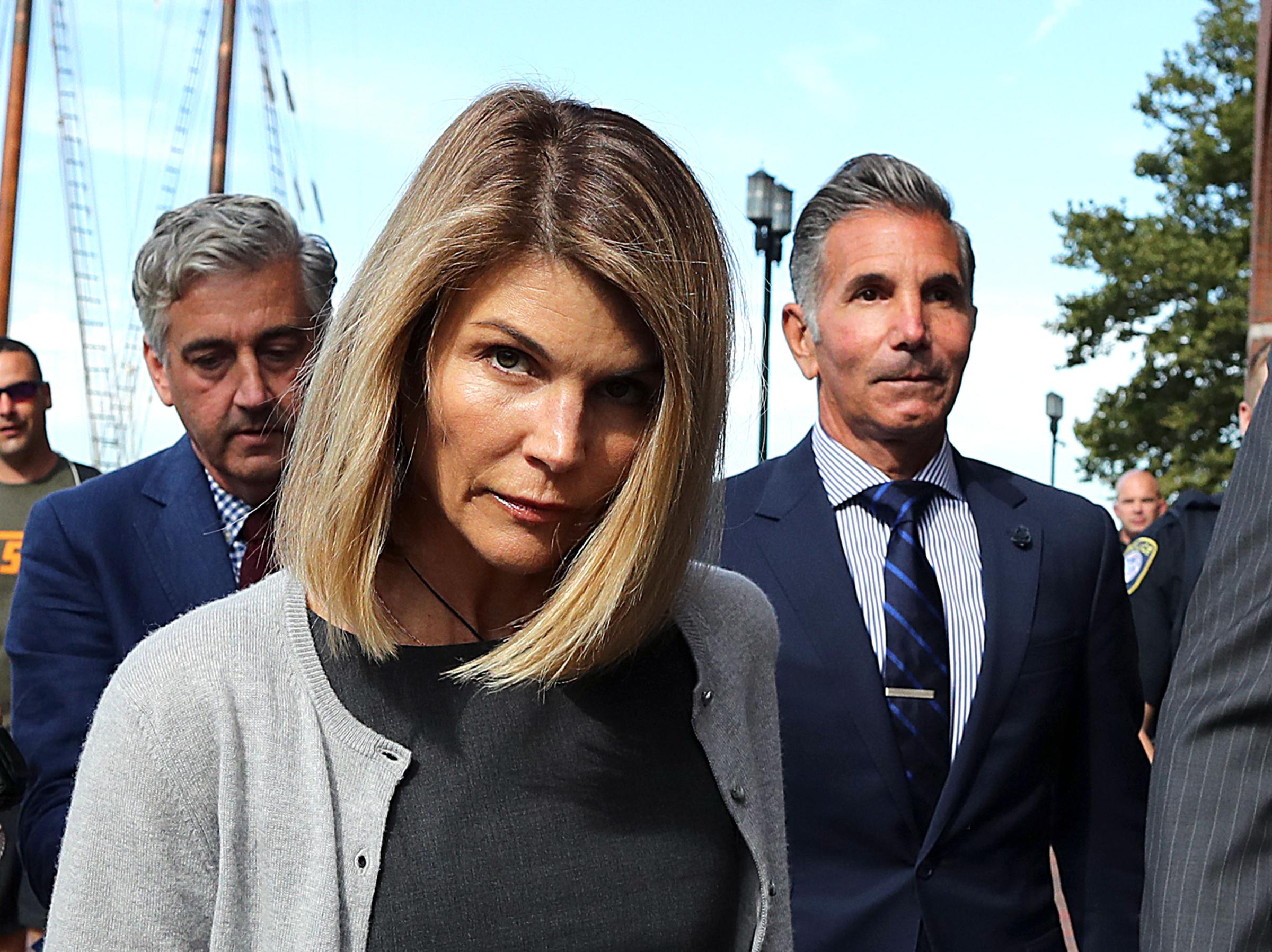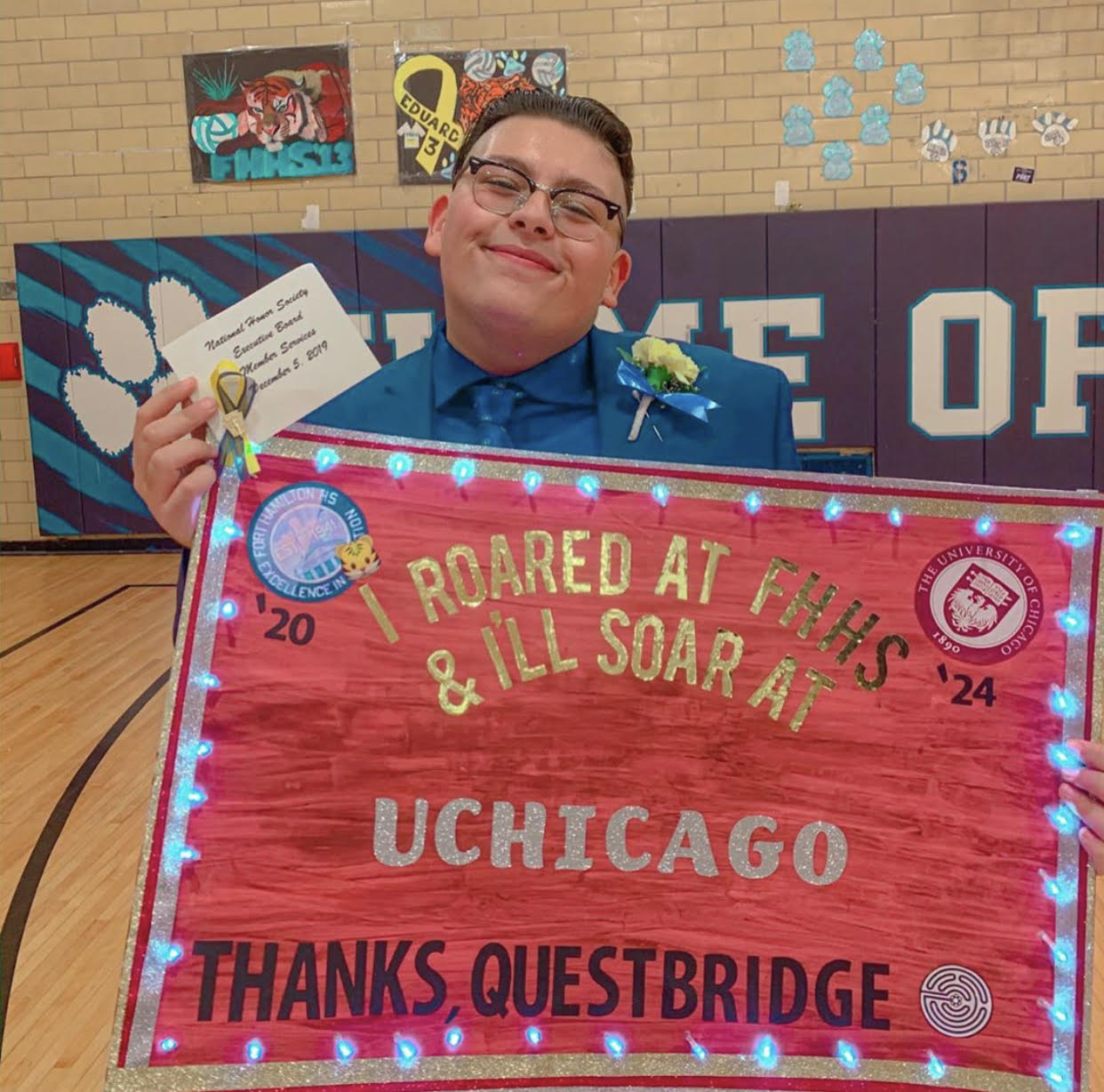
Sally Rubenstone has not been able to go to the grocery store in a year without someone asking her, the college admissions expert among her neighbors in Northampton, Mass., about the so-called “Operation Varsity Blues” scandal.
Did it surprise her that rich parents were cheating to get their kids into good colleges? It did not. Could it affect their own children when it comes time to apply to college? It should not, she assures them.
In the year since more than 30 parents were charged with facilitating fraud and paying a combined $25 million in bribes to get their children into elite schools, the specter of the scandal has hovered over the world of college admissions—a cautionary tale of helicopter parenting taken to its illegal extremes and a stunning reminder of how flawed the U.S. college application process is. The scandal, which drew in Hollywood stars, hedge fund millionaires, and athletic coaches, exemplified the advantages afforded to wealthy applicants and fueled debates about fairness and equity in admissions. But for all the conversation about the need for admissions reform, and as hundreds of thousands of high school seniors wait to hear back on where they’ll be starting classes in the fall, experts say little has changed.
“There has to be sweeping changes in order to bring both equity and sanity to this process. And the changes I’ve seen so far may be baby steps in the right direction, but they’re not moving the needle in a way that I view as significant,” says Rubenstone, an independent college counselor and former admissions officer at Smith College in Northampton. “Any sort of changes that are being made now — or might foreseeably be made in the next year or so — are going to be a spit in the ocean.”
If there’s one thing the admissions scandal has done, though, it has energized advocates who have long pushed for changes that could alleviate the inequities plaguing low-income and minority students as they vie for spots at top colleges and universities.
In December, a group of minority students and advocacy organizations filed a lawsuit challenging the University of California to stop requiring the SAT and ACT in admissions. The lawsuit argues that the standardized testing requirement “systematically and unlawfully denies talented and qualified students with less accumulated advantage a fair opportunity to pursue higher education at the [University of California].” A faculty task force at the university pushed back, insisting that test scores are a good predictor of how well students will do in college. The university has filed an objection to the suit, claiming the plaintiffs don’t have a case. A judge will hear the case in May, the same month that the university’s Board of Regents is scheduled to vote on the testing requirement.
“The Varsity Blues scandal—I think it’s the tip of the same iceberg, but it wasn’t like that’s what woke us up,” says Mark Rosenbaum, an attorney at Public Counsel, which filed the lawsuit. “This case could’ve been brought generations ago.”
Akil Bello, the advocacy director for FairTest, which opposes standardized testing, has used the scandal to encourage low-income students who might suffer from imposter syndrome, or doubting that they are qualified to attend top schools.
“You have some people who will, implicitly or explicitly, tell them they don’t belong,” Bello says, but he thinks Varsity Blues has provided those kids with the perfect retort: “How much did your mommy pay for you to get in?”

The schools caught up in the admissions scandal say they’ve taken steps to prevent it from happening again. The University of California system—which saw UCLA and UC Berkeley ensnared in the corruption—said it had begun to monitor donations to prevent them from affecting admissions decisions. It also said it was creating a clear document trail to explain admissions decisions based on athletics or other special talents; improving the process of verifying those special talents; and working to identify potential conflicts of interest in admissions. The University of Southern California—where three former coaches and a former senior associate athletic director were accused of helping students gain admission in exchange for bribes—said it had strengthened its process for reviewing student-athlete applications, requiring that three athletics officials review each file before sending it on to admissions officers. The university will also audit athletic rosters twice each year and cross-check it against admissions lists.
“Up until last year, admissions officials would often question if an athletic recruit was academically qualified for their institution, but they never considered whether a recruit was athletically qualified,” Rubenstone says. “That’s no longer true.”
Parents who pleaded guilty to the scheme have been sentenced to as much as nine months in prison, while others continue to fight the charges. Perhaps the most closely watched case involves Full House actor Lori Loughlin and her husband, designer Mossimo Giannulli, who are expected to go on trial in October. Both pleaded not guilty to charges that they paid $500,000 to get their two daughters admitted to the University of Southern California (USC) as crew team recruits, even though neither student was a rower. Their daughters are no longer enrolled at USC.
Jon Reider, a former Stanford admissions officer and an independent college counselor in San Francisco, says the efforts to prevent fraud won’t stop wealthy families from gaining an advantage. “I think the guard rails are a good thing, but I don’t think we should pretend it’s going to be a solution,” he says, adding that more drastic measures are necessary.
Reider would like colleges to eliminate early decision applications and stop giving an edge to athletes and legacy applicants. Rubenstone would like to simplify the process to a single, proctored application, preventing parents or consultants from rewriting students’ essays. Bello wants to limit the use of standardized testing and stop the practice of awarding financial aid based on test scores.
“A few different institutions nibbled around the edges,” Bello says of the efforts to prevent application fraud. “You know, ‘We’re not going to have one set of eyes on it. We’re going to have three.’ It’s like, great, so now we have three people to bribe instead of one,” he says. “The loopholes that were exploited are baked into the system.”
Lucy Kane—who works with Bottom Line, a nonprofit that helps low-income, first-generation students through the college application process—encounters those loopholes regularly as she guides New York City high school students through the process of deciding where to apply, writing essays and parsing financial aid offers. When Kane meets with students for the first time, she asks what scares them most about applying to college.
“By far, the most popular answer is affording it,” Kane says. “‘I don’t know how my family and I are going to be able to afford this.’”
One of the students she worked with this year is 17-year-old Youssef Hasweh, a high school senior in Brooklyn who is getting ready to attend the University of Chicago in the fall. Hasweh was preparing to apply to schools when news of the college admissions scandal broke last March. It didn’t surprise him.
“You need to work twice as hard to just get to the same level as students of privileged backgrounds,” he says. “So it didn’t shock me because I had already known that. I had already been pushing, as much as I could, to catch up.”
That included taking the SAT three times, knowing that he’d “bomb” his first score because he hadn’t prepared yet. After using free test prep materials available online, he brought his score up to 1300 out of a possible 1600. That placed him in the 86th percentile nationally, but below the 1500 to 1560 score earned by the “middle 50%” of students admitted to the University of Chicago.
Just as the SAT can be especially challenging for students whose parents cannot afford high-priced test prep courses or private tutors, the entire application process presents obstacles for less-advantaged students. Hasweh, whose parents did not attend college, turned to Kane for help filling out complicated financial aid forms, and she helped him craft his essay about being his high school’s first male cheerleader.
At the top of his list of extracurricular activities—before cheerleading, law team or Key Club — Hasweh listed his time spent caring for his older brother, who has cerebral palsy, which Hasweh describes as “the biggest role I’ve ever had.”

“I didn’t consider it an activity. I considered it a really important obligation,” he says.
In the end, Hasweh was accepted to the University of Chicago, one of eight schools he applied to through Questbridge, a nonprofit that matches low-income students to full-tuition scholarships at top universities. It’s also the only school he applied to that does not require students to submit SAT or ACT scores, a change rolled out in 2018. It is still the only school ranked in U.S. News & World Report’s top 20 national universities to go test-optional.
But it’s the kind of change that Hasweh, and advocates for admissions reform, want to see more of. “I’m a firm believer that the SAT only measures someone’s income,” says Hasweh, who has a 4.32 weighted GPA and credits the University of Chicago’s test-optional policy, in part, for his acceptance there.
After the school made the change—and began guaranteeing free tuition to students from families with annual incomes less than $125,000—it says the number of first-generation and low-income students in the 2019-20 freshman class rose by 20%.
In a similar vein, Johns Hopkins University President Ronald Daniels says the elite Baltimore school has increased the number of students eligible for Pell Grants—federal funding for low-income students—since it stopped giving preference to legacy applicants. Daniels announced this year that the elimination of legacy admissions was quietly put in place in 2014 after he decided they were “impairing our ability to educate qualified and promising students from all backgrounds and to help launch them up the social ladder.”
But legacy preference is still standard practice at many colleges, and wealthy parents continue to be able to give extra help to their children. “It’s really frustrating to hear about how these massive sums of money can be just snuck under the table, when for the students we work with, major life decisions are being made over $1,000,” says Kane.
Last month, USC announced it would wipe out tuition costs for students from families making $80,000 or less—which many say is a step in the right direction in the face of a $1.6 trillion national student debt problem. It costs more than $77,000 to attend USC today, including tuition, housing, books and meals. Across the country, the average cost of attendance is more than $43,000 at a private four-year school and more than $20,000 at a public four-year school.
Change will have to come not only from schools, but also from parents, says Richard Weissbourd, a senior lecturer at the Harvard Graduate School of Education and a longtime advocate for reform in the admissions process. Last March, just as news of the admissions scandal broke, he released a coincidentally timed report warning that the focus on academic achievement was leading to ethical lapses, particularly among middle- and upper-income parents.
“In an effort to give their kids everything, these parents often end up robbing them of what counts,” the report said.
The admissions scandal exposed the kinds of ethical lapses he warned of, but Weissbourd says it will take a lot more than some criminal prosecutions and extra scrutiny of college applications to fix the underlying issue.
He suggests, for example, that college admissions offices limit their focus on Advanced Placement courses—which are not available in equal numbers in all high schools—and stop touting their low acceptance rates as evidence of their desirability.
“I think that there’s a lot more that colleges and college admissions can do,” he says.
As for parents, Weissbourd urges them to stop focusing on the most selective universities in the country, warning that it puts excessive pressure on students and tempts mothers and fathers to pull strings for their children. “So long as parents are hyper focused on this small number of colleges,” he says, “they’re going to be looking for an angle to get their kids into those colleges.”
More Must-Reads from TIME
- Why Biden Dropped Out
- Ukraine’s Plan to Survive Trump
- The Rise of a New Kind of Parenting Guru
- The Chaos and Commotion of the RNC in Photos
- Why We All Have a Stake in Twisters’ Success
- 8 Eating Habits That Actually Improve Your Sleep
- Welcome to the Noah Lyles Olympics
- Get Our Paris Olympics Newsletter in Your Inbox
Write to Katie Reilly at Katie.Reilly@time.com